Have you heard about Confucius (孔子, Kǒngzǐ) – a highly revered Chinese scholar and philosopher? Well, Confucius lived around 2500 years ago (551–479 BC) in China. In Chinese culture, there are only a few philosophers whose stature could be compared to that of Confucius. As such, Chinese culture is heavily influenced by the teachings of Confucius. Many of his teachings are now part of the academic curriculum in China. Not to mention, I was always fascinated to learn more about the life and ideas of Confucius.
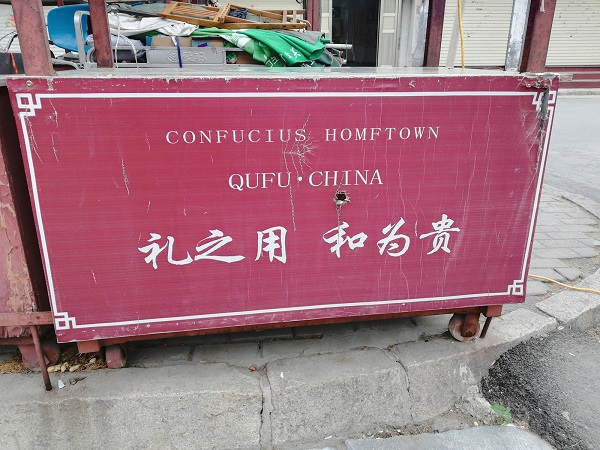
Now, since I live in Suzhou (Jiangsu province of China), it was very much on my wish list to visit the hometown of Confucius -Qufu (曲阜, Qūfù) in Shandong province of China.
In fact, by the time I am writing this blog-post, I’ve already been to 23 Chinese cities (from Harbin to Guangzhou – going solo all over).
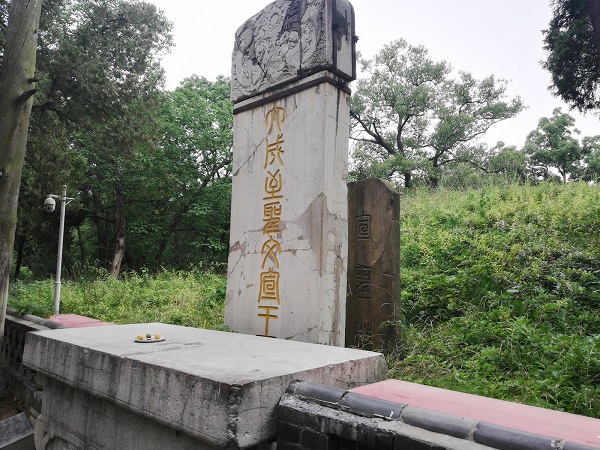
My latest trip came in July 2018 when I travelled to Huangshan (the Yellow Mountain).
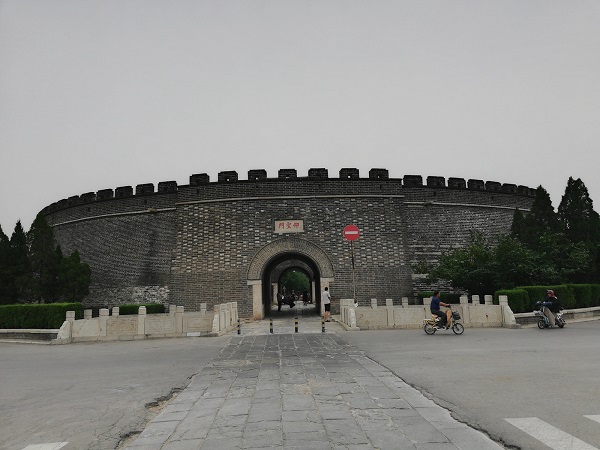
Finally, in June-2018 I headed to Shandong province of China. I visited three important cities – Qufu, Jinan and Qingdao. Qufu was my 20th Chinese city. In this blog-post I’d share my memories of Qufu – hometown of Confucius. You can explore more about the Shandong travel guide by simply following the hyperlinks.
Qufu city brief
Do you know where is the Qufu – the hometown of Confucius?
Well, Qufu is located in the southwestern part of Shandong province. The city is roughly 130km south of Jinan – the provincial capital city. It’s a county-level Chinese city with a population of ~60,000 inhabitants.
Qufu has more than 1500-year-old socioeconomic history. It was once famous for the Dongyi – the Eastern Barbarians.
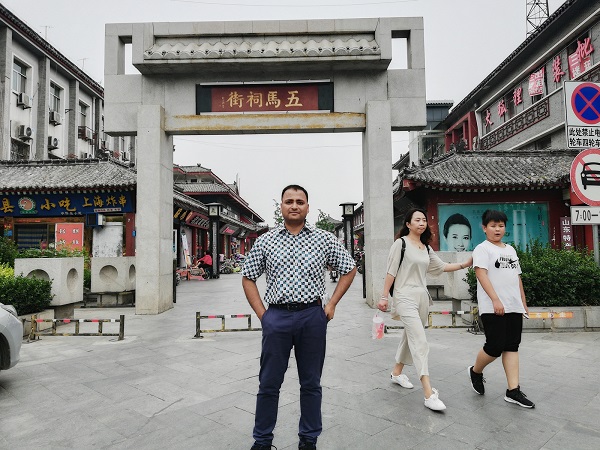
During the Tang dynasty, the city was mainly spread around the Temple of Duke Zhou.
Qufu has a good number of travel attractions. The city is famous for being the final resting place of Confucius and his descendants (70+ generations). The most famous Qufu travel attractions include-
- Cemetery of Confucius (孔子墓, Kǒngzǐ mù),
- Temple of Confucius (孔庙, Kǒng miào),
- Kong Family Mansion (孔府, Kǒng fǔ),
- Yan Hui Temple (颜庙, Yán miào),
- Temple of Duke Zhou (周公庙, Zhōugōng miào).
All these attractions are located nearby – within a span of a couple of kilometers. If you are travelling to Qufu in a non-summer season, you can just walk from one tourist attraction to another.
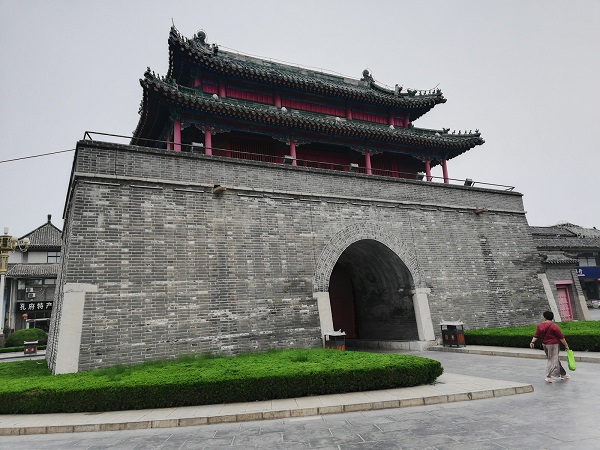
The Cemetery of Confucius is probably the most famous Qufu attraction. It was included in the UNESCO World Heritage Site list in 1994.
qufu china map
Let me show you a simple Baidu travel Map of Qufu – the most important travel attractions are marked in English.
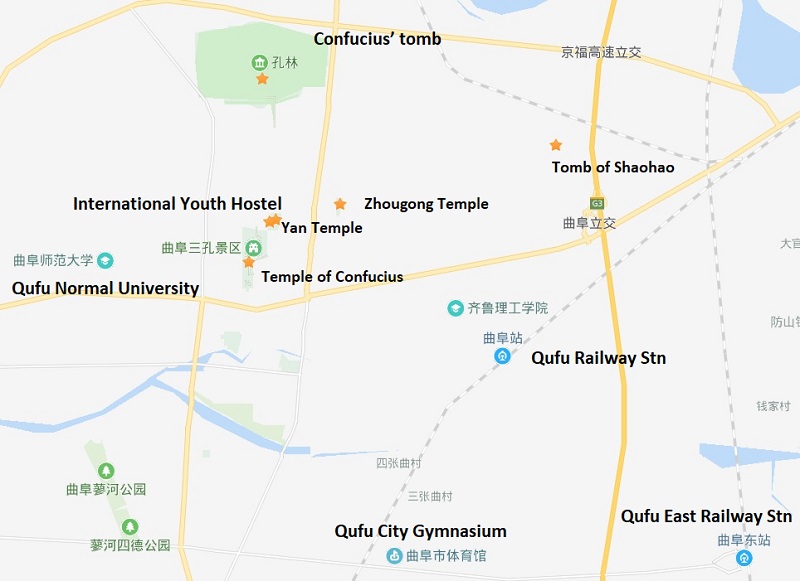
Qufu weather – Best time to visit Qufu?
I was travelling to Qufu in mid-June and the weather were indeed freaking hot throughout the day! The midday temperature was consistently more than 30’C. Walking under the sun was simply not an easy option. If you are here in summer, you are recommended to carry an umbrella and a water bottle.
In case you don’t like the summer season, you’d better skip travelling to Qufu from mid-June to mid-August. During winter, it’s common to see occasional snowfalls.
To avoid weather hassles, you should try to use the public bus/taxi – they’re usually air-conditioned.
Usually, the best time to visit Qufu (and other cities in Shandong province) would be March, April, October and November.
How do you get to Qufu?
As you can see in the Qufu map, there are two main railway stations in Qufu – the Qufu Railway station, and Qufu East Railway Station.
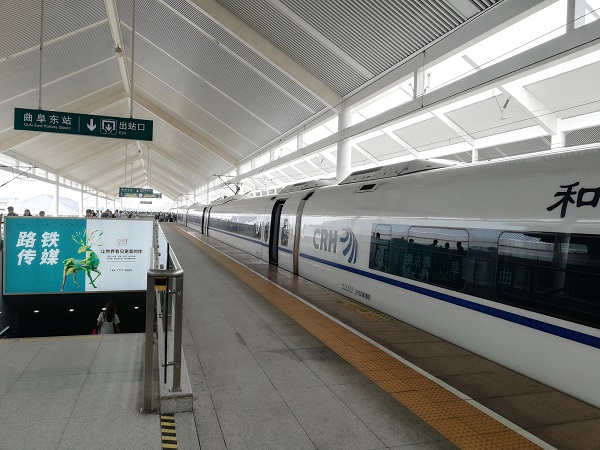
Qufu Railway station caters to the local and slow-speed trains.
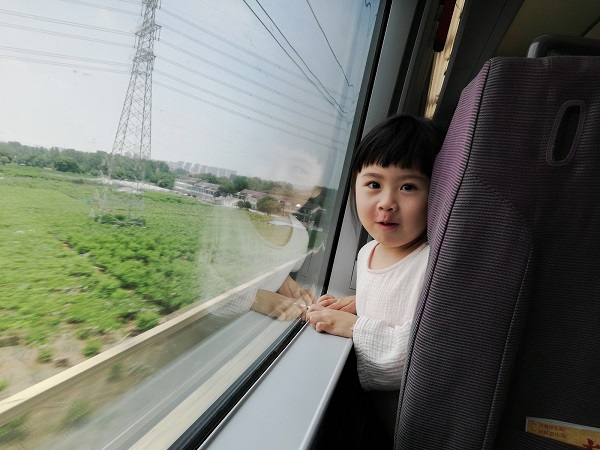
The Qufu East Railway Station is for the high-speed trains. The station is part of the Beijing–Shanghai high-speed railway. That means, if you are coming to Qufu from Shanghai or Beijing, most likely you’d get down at the East station.
In fact, there are so many fast bullet trains running daily between Beijing and Qufu. Generally, the bullet trains would start from Shanghai and go towards Beijing or further North East (or vice versa).
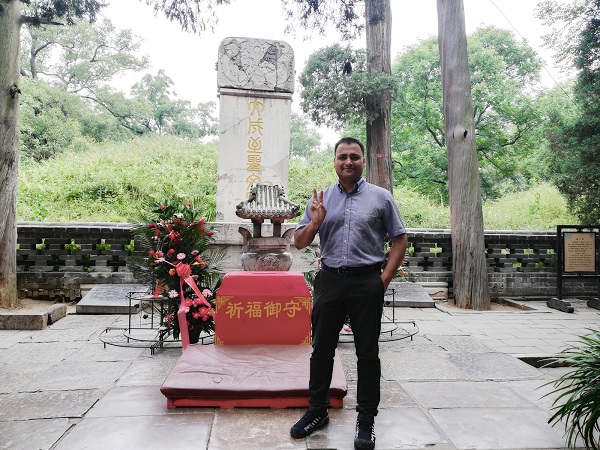
Qufu Railway station to downtown
Well, there are buses connecting Qufu East Railway station to the downtown. These buses are numbered as K01, K02, etc. (RMB 1).
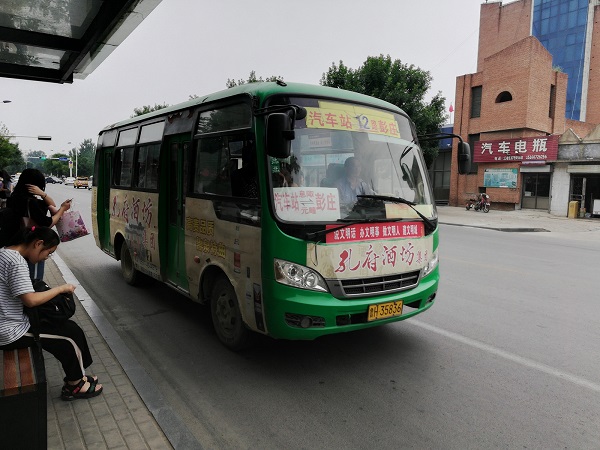
The waiting time for a bus could be nearly half an hour. During my trip, there were too many people waiting for the bus (at East station). The bus was too crowded and I had to stand in the bus as the bus was full. I could, of course, have opted for a taxi ride, but I wanted to get the local feel. So, I chose to hop onto a local bus.
Qufu accommodations and hotels
Well, there are so many hotels in Qufu. If your budget allows, Shangri La Qufu could be opted for.
For the budget travelers, Qufu International Youth Hostel is just perfect. In fact, the hostel has both single (RMB 120/night/person) and shared rooms (RMB 50). Most of the Qufu travel attractions (including Confucius Temple) are located at a walking distance from the Qufu International Youth Hostel.
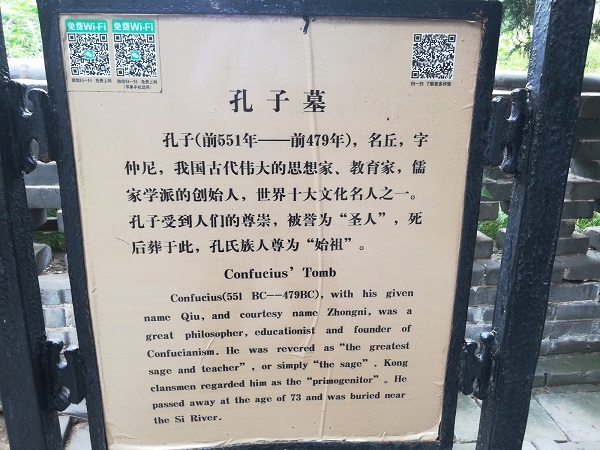
Check in at Hotel
During accommodation check in, I saw the receptionist entering my passport number in a database to verify my police registration record (foreigners need to register at a police station within 24 hours of entering China). This was the first time for me to see a such verification in China.
After check in, I was informed about reciting the Analects of Confucius. As such, if you remember 5 Analects and recite correctly at the ticket office, you’d be granted a free entry to three Qufu travel attractions – the Confucius sites (that’d otherwise cost you RMB 140).
Get around
Well, the overall public transportation in Qufu is far from being Adequate. There is no MRT and the buses run at a slow frequency.
Fortunately, most of the tourist attractions are located within a walking distance.
If you don’t like walking, you can rent a bicycle from a bus stop (free for usage up to one hour).
There are taxis available virtually everywhere in the city. Flag down RMB 9-10.
The city is full of rickshaw -RMB 10 for ~2KM, negotiable.
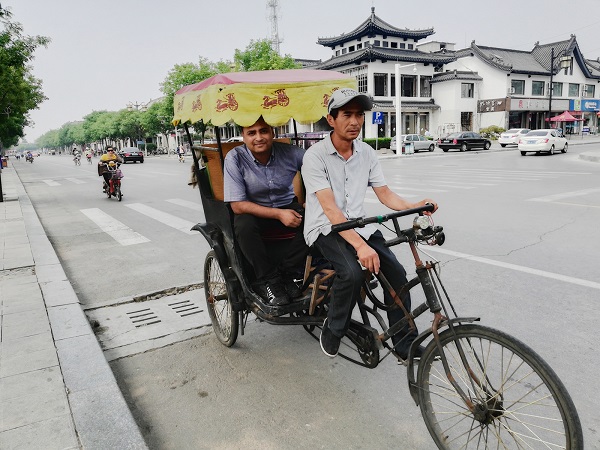
You can also find a Qufu light carriage drawn by a horse, negotiable.
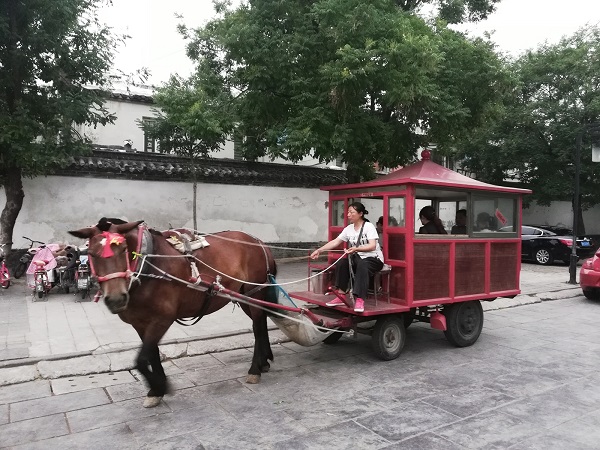
Confucius everywhere
In Qufu, you’d feel that Confucius is present virtually everywhere. No matter which direction you are heading in – you’ll see Confucius! You don’t believe me? Let me show you a few pics-
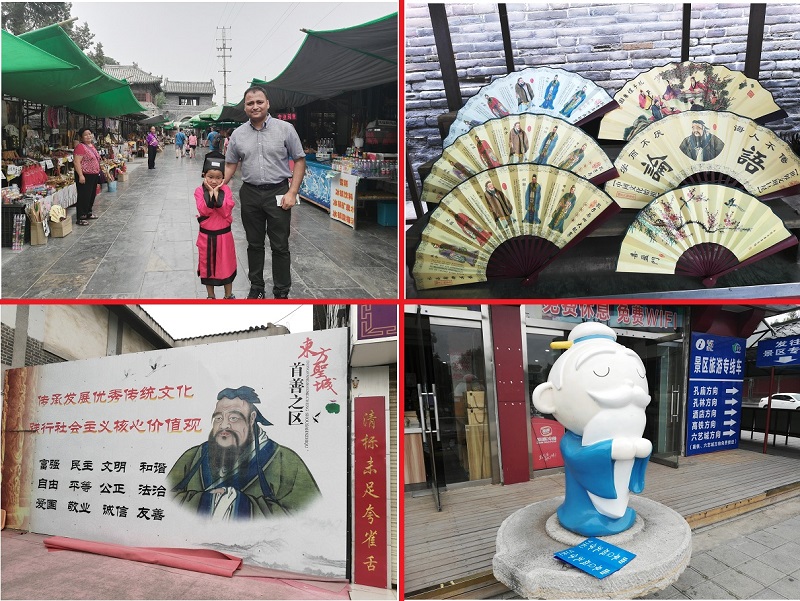
A laid-back city
If you like laid-back cities, welcome to explore Qufu! The locals are very relaxed and friendly.
Here is a photo that I clicked in Qufu – the local women enjoying playing cards-
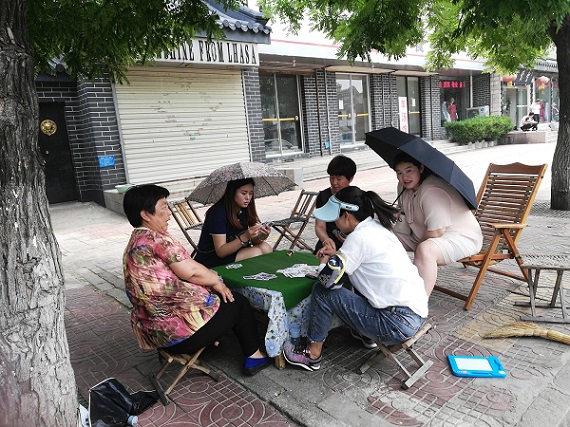
Top things to do in Qufu
Now let me Quickly provide you a list of the top things to do in Qufu, aka, the famous Qufu travel attractions.
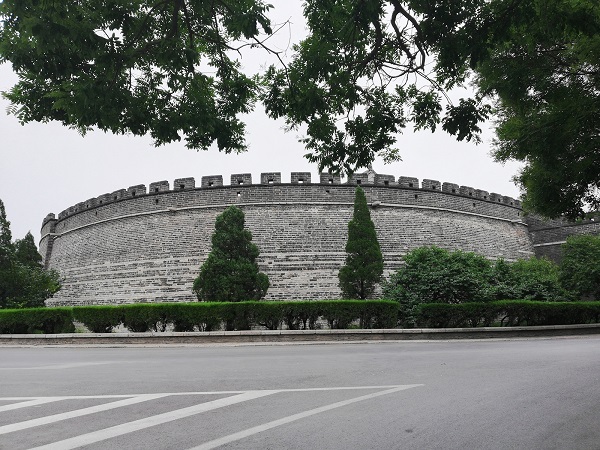
Cemetery of Confucius
The tomb of Confucius (who once lived some 2500 years ago) is located in the Kong Forest (孔林, Kǒng lín). The forest also contains cemetery of Confucius’ disciple and thousands of his descendants (70+ generations). The cemetery is located around 1.5km from the Qufu International Youth Hostel. You can easily spend a few hours wandering in the forest.
There are sightseeing buses available in the forest for an extra pay of RMB20.
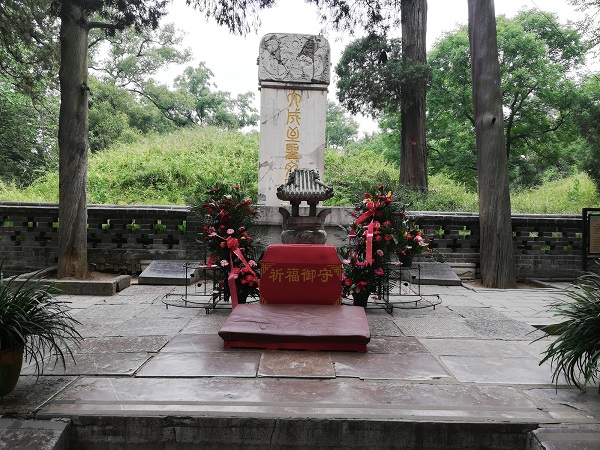
Tickets– the combined entry ticket fee to visit the Three Confucian sites (三孔, Sān kǒng) in Qufu is RMB 140 (June, 2018). The sites include-
- The Confucian forest,
- The Confucian temple, and
- The Confucian mansions.
I had a student card and I got a 50% discount (I paid RMB 70).
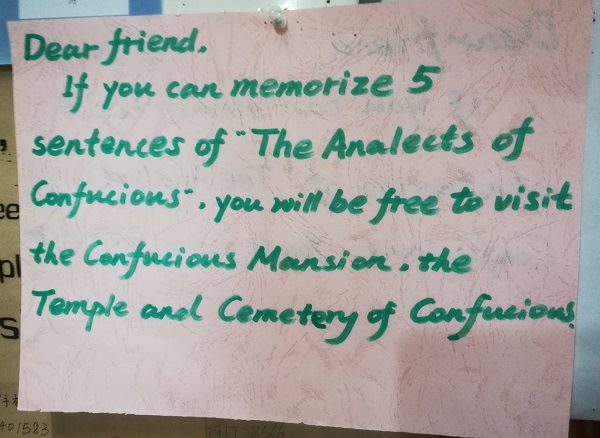
If you can recite at least 5 Analects of Confucius, you get a free ticket – and you can visit San Kong for free. Please note that if you wish to recite the Analects for a free entry, you need to do that at the Confucius temple. During my visit, I made this mistake of trying to recite at the Confucius Forest, and it was not accepted. Fortunately, I had a student card and got a discount.
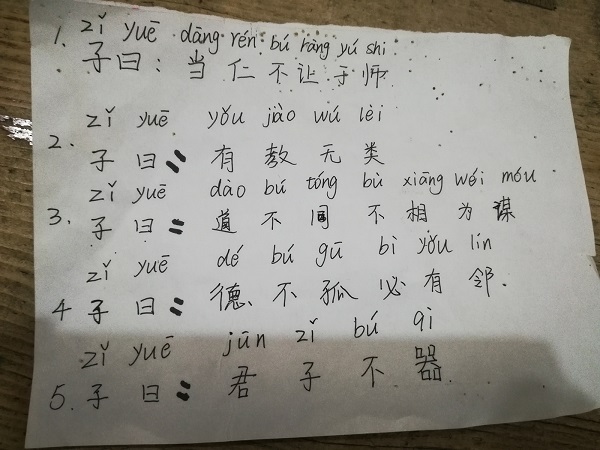
The forest also contains tombs from the Ming and Qing eras.
The cemetery is now part of the UNESCO World Heritage Site.
Opening hours – 8.10 am-5.30pm. I reached the gate at 7.30am and had to wait 40 minutes for the forest gate opening. In fact, it was a hot and humid morning. Nevertheless, I kept wandering for ~2 hours in the forest (alone).
Temple of Confucius
The temple (孔庙, Kǒng miào) covers an area of 16,000 square meters and it’s considered to be one of the largest Confucius temples in the world! The temple premise is massive – there are more than 450 rooms and now it’s part of the world heritage site.
The premise looks similar to the Forbidden city of Beijing.
The temple contains Apricot Platform, Stele pavilions and so many gates, such as Lingxing Gate and Shengshi Gate. The Dacheng Hall is also very interesting.
You can spend nearly a half day exploring the temple.
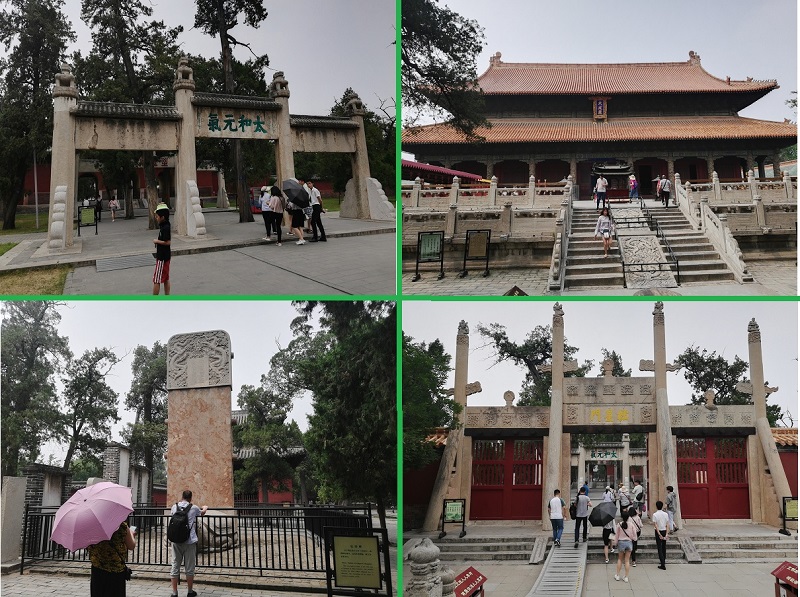
Kong Family Mansion
The Mansion (孔府, Kǒng fǔ) used to be the residence of the descendants of Confucius. The descendants were directly responsible to organize socioreligious ceremonies in Qufu. Now the mansion is converted into a museum and it’s also part of the UNESCO World Heritage. The mansion is located directly next to the Temple of Confucius.
Some of the important places in the Kong Family Mansion include The Back Garden, Gate to the Inner Apartments, Gate of Double Glory, Great Hall, Second Hall, etc.
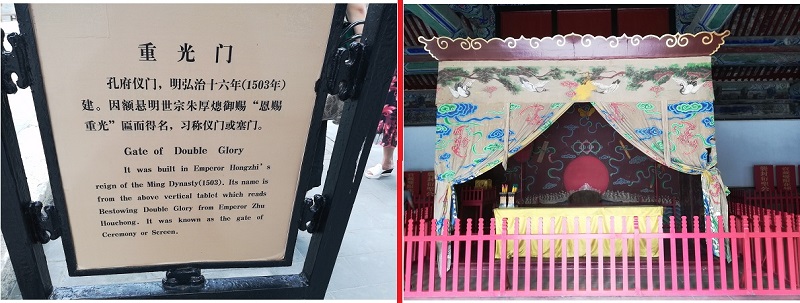
Temple of Yan Hui
The Yan temple (颜庙, Yán miào) is dedicated to Yan Hui (521-490 BC) who is considered to be one of the favorite disciples of Confucius. The temple is located just in front of the Qufu youth hostel. RMB 40 (you’ll need a separate ticket, discounts available).
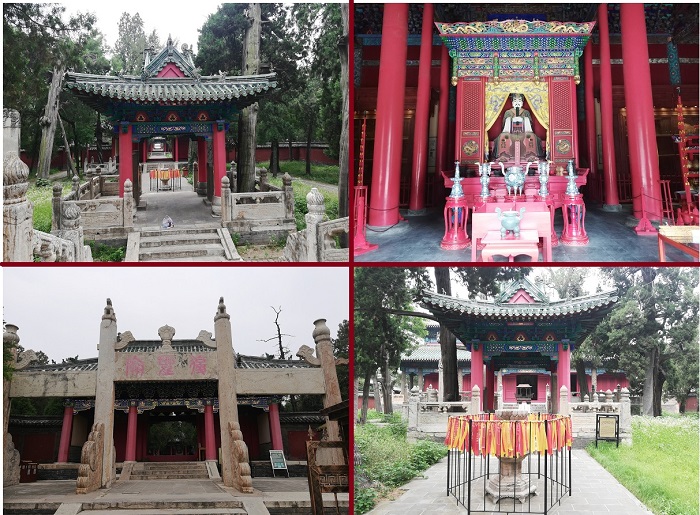
Temple of Duke Zhou
The temple is located ~2km away from the youth hostel.
It’s dedicated to Duke Zhou, a legendary figure in Chinese history known for his administrative skills. The temple contains 13 buildings.
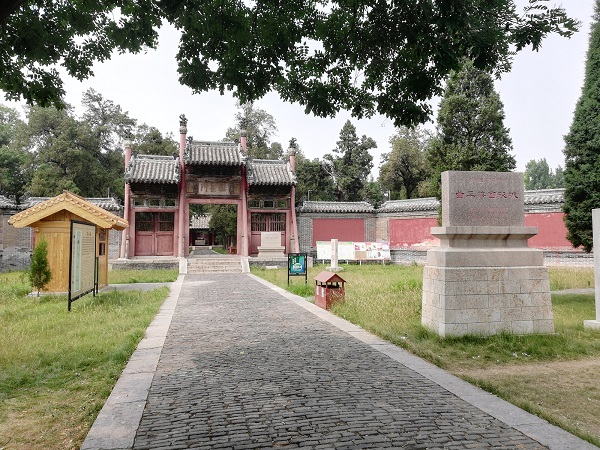
The most important building is the Yuanshen Hall. Ticket RMB 25 -only cash. Not much crowded. I took a rickshaw to get to the temple for RMB 10.
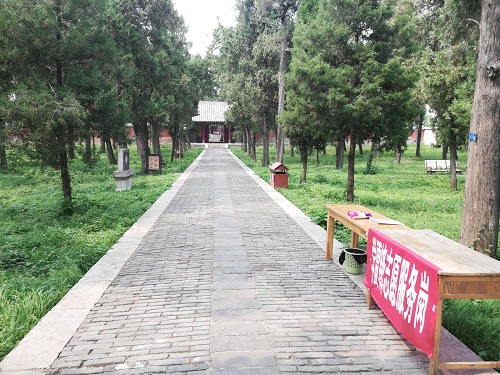
Shou Qiu and Shaohao Tomb
Well, this mausoleum museum (少昊陵, Shǎo hào líng) is situated on the outskirts of Qufu city. The tomb area is a rural village. There is no direct bus to the mausoleum. I took a bus and got down at the nearest bus stop that was ~2km away from the tomb. Then I saw a guy coming on a motorcycle and asked him for a lift.
He kindly agreed, offered a lift and dropped me directly at the museum (Many THANKS!).
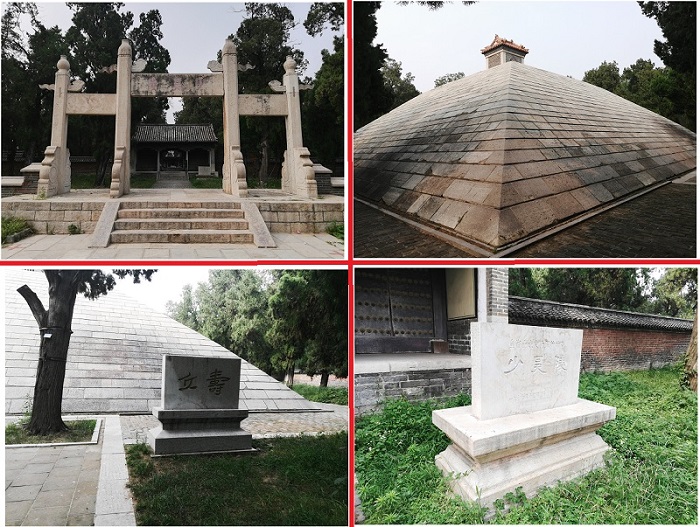
The problem was not yet over – I didn’t have any cash and the ticket was only available for a cash payment. Somehow, I managed to buy the ticket by transferring RMB 40 to the Alipay account of the ticket seller.

I was the only visitor.
There are so many trees in the museum complex. In front of the tomb, you’ll see a ~9m tall pyramidal monument called Shou Qiu. The white monument marks the birthplace of the Yellow Emperor – Shaohao.
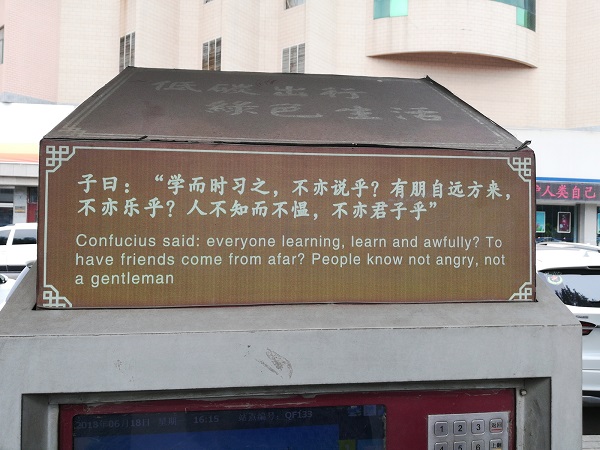
Food and Shopping
Qufu has a couple of night markets, and you are recommended to stop by the Wu Ma Ci Street (五马祠街, Wǔ mǎ cí jiē). The Market is open up to 10pm and offers you a unique opportunity to try Shandong food. You shouldn’t miss Shandong pancake cakes – there are many varieties of them and taste really great!
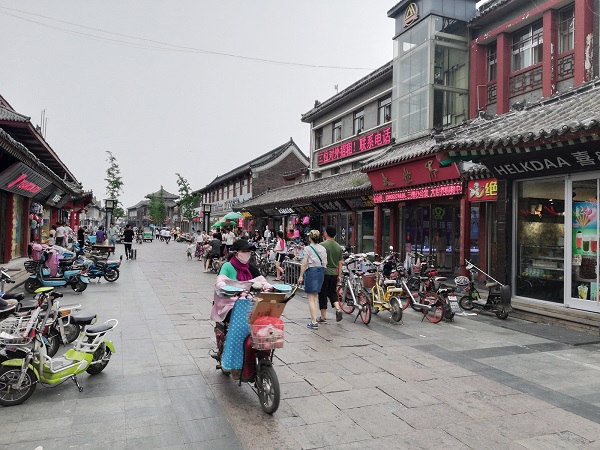
Qufu nightlife
The nightlife scene in Qufu is quite okay. You should walk along the city wall – the illuminated city wall lightings look very scenic. The street lightings also offer wonderful views.
Qufu bars– well, there are few bars in Qufu, but the bar scene in Qufu is not very inspiring. I think you can just stop by Qufu International Youth Hostel – there is a bar inside the hostel. It’s open till late and the prices are reasonable. In fact, Qufu is not a very expensive city (compared to Suzhou).
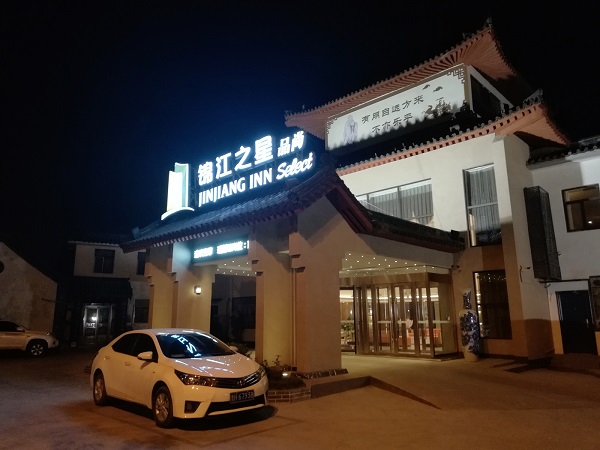
How much time you need for Qufu city?
Well, I spent two nights in Qufu and managed to visit each of the Qufu attractions listed above. So, I feel spending 24hrs in Qufu should be a good enough time to cover most important Qufu travel attractions.
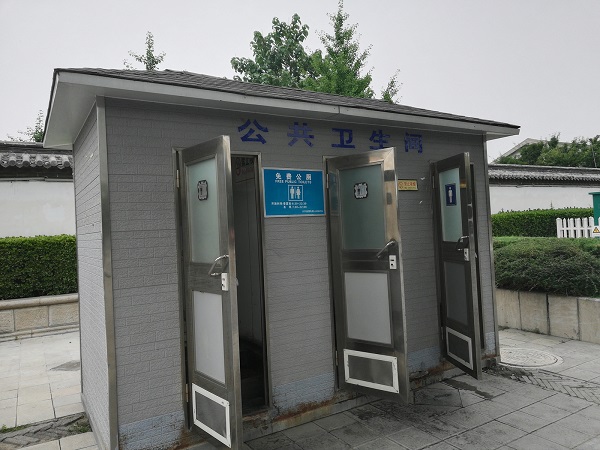
Stay safe
Qufu is a safe city. The rickshaw pullers may sometime approach you to get into their vehicle. Some people outside Confucius cemetery gate may ask you to buy souvenirs. Just say no to them if you are not interested.
As such, despite being a solo traveler, I didn’t feel any safety issues in Qufu.
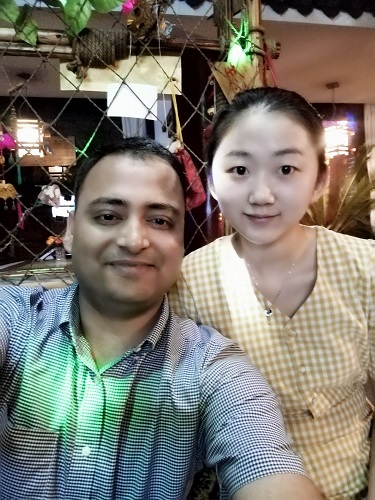
In summary, I loved traveling to Qufu and cherish tons of sweet memories from the historical Chinese city. If you are travelling to Shandong, spending at least a one full day in Qufu is highly recommended. Traveling to Qufu is absolutely worth it!
That’s all in this Shandong, China Travel Guide & Review blog-post about Qufu.
If you have any question about the Qufu city of Shandong province or simply about China tours, feel free to post in our forum so that others could also contribute and learn. For regular updates like us on Facebook, or follow on Twitter!
If you find the write-ups useful, don’t forget to buy me a beer!
Wish you a great time exploring the hometown of Confucius!
Cheers!
Last updated: Wednesday, September 26, 2018